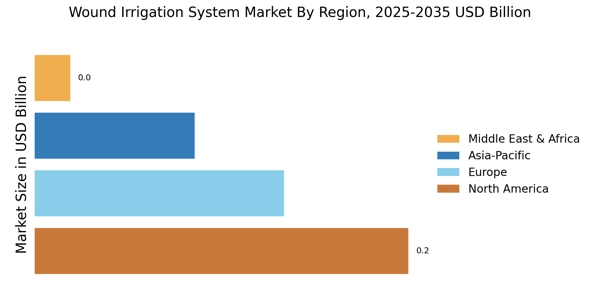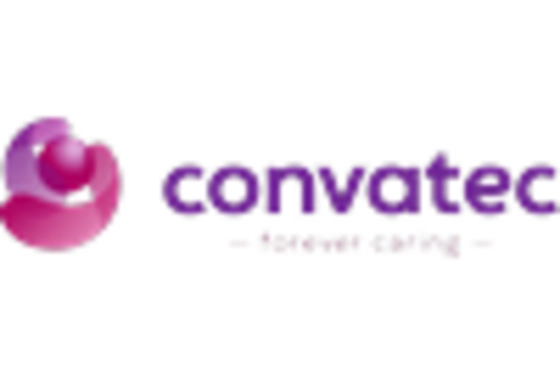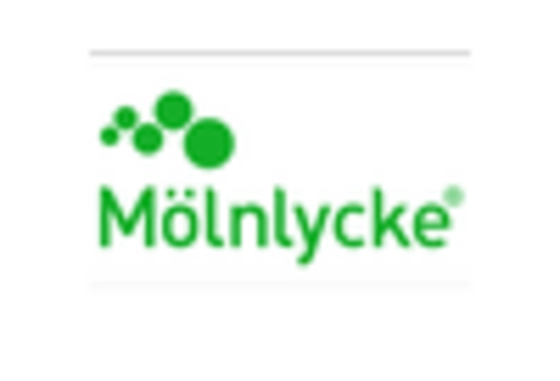Focus on Infection Control
Infection control remains a critical concern within the Wound Irrigation System Market. The rising incidence of healthcare-associated infections (HAIs) has prompted healthcare facilities to adopt more stringent infection prevention protocols. Wound irrigation systems play a pivotal role in minimizing the risk of infections by effectively cleansing wounds and removing debris. The increasing awareness of the importance of infection control is driving demand for advanced irrigation systems that incorporate antimicrobial solutions. Market data suggests that the segment of wound care products focused on infection prevention is expected to witness substantial growth, potentially reaching a valuation of several billion dollars in the coming years. This trend underscores the necessity for healthcare providers to invest in effective wound irrigation solutions.
Increasing Healthcare Expenditure
The Wound Irrigation System Market is benefiting from the overall increase in healthcare expenditure across various regions. Governments and private sectors are investing more in healthcare infrastructure, which includes the procurement of advanced medical devices and technologies. This trend is particularly evident in emerging economies, where rising disposable incomes and improved access to healthcare services are facilitating the adoption of modern wound care solutions. As healthcare budgets expand, there is a growing emphasis on quality care, which includes the use of effective wound irrigation systems. Market projections indicate that this increase in healthcare spending could lead to a substantial rise in the demand for innovative wound care products, thereby positively impacting the wound irrigation market.
Rising Demand for Chronic Wound Management
The Wound Irrigation System Market is witnessing a surge in demand for chronic wound management solutions. Factors such as an aging population and the prevalence of chronic conditions, including diabetes and vascular diseases, are contributing to this trend. Chronic wounds require specialized care, and effective irrigation systems are essential for promoting healing and preventing complications. Market analysis indicates that the chronic wound care segment is projected to expand significantly, with estimates suggesting a growth rate of around 7% annually. This increase reflects the urgent need for healthcare systems to address the challenges associated with chronic wounds, thereby driving the adoption of advanced wound irrigation technologies.
Growing Awareness of Wound Care Best Practices
The Wound Irrigation System Market is experiencing growth driven by an increasing awareness of wound care best practices among healthcare professionals and patients. Educational initiatives and training programs are being implemented to enhance knowledge regarding effective wound management techniques. This heightened awareness is leading to improved patient outcomes and a greater emphasis on the use of proper irrigation systems. As healthcare providers recognize the importance of adhering to best practices, the demand for high-quality wound irrigation systems is likely to rise. Market Research Future suggest that this trend could result in a significant uptick in the adoption of advanced irrigation technologies, as stakeholders seek to optimize wound care and ensure patient safety.
Technological Advancements in Wound Irrigation Systems
The Wound Irrigation System Market is experiencing a notable transformation due to rapid technological advancements. Innovations such as automated irrigation devices and smart wound management systems are enhancing the efficiency and effectiveness of wound care. These advancements not only improve patient outcomes but also streamline clinical workflows. The integration of digital technologies, including mobile applications for monitoring and data collection, is becoming increasingly prevalent. According to recent estimates, the market for advanced wound care technologies is projected to grow at a compound annual growth rate of approximately 6.5% over the next few years. This growth is indicative of the industry's shift towards more sophisticated solutions that cater to the evolving needs of healthcare providers and patients alike.


















Leave a Comment